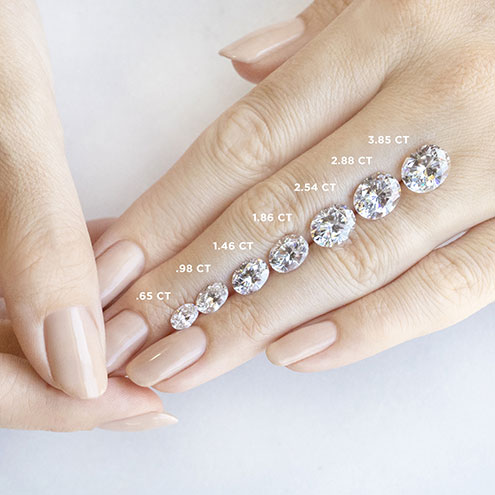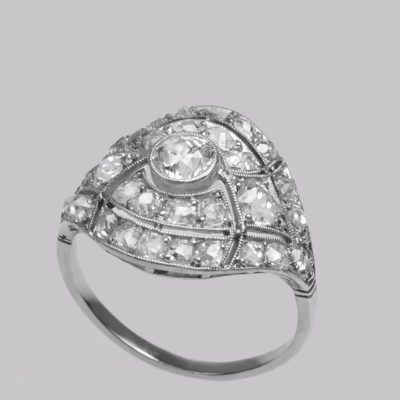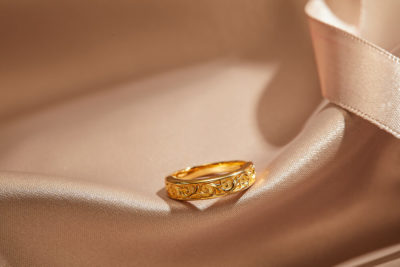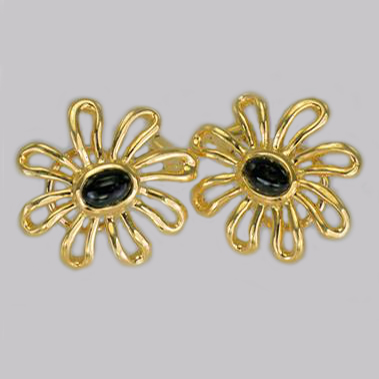
Just by the way the term “estate jewellery” is an Americanism for “second-hand jewellery”, ie not new jewellery
Carat has two distinct meanings
Carat can refer to the quality or purity of gold – pure gold ie a metal that is 100% gold and nothing else but gold, is known as pure gold or 24-carat gold
So for example with a ring which is 18 carat ie 18/24s gold or put another way, 18 divided by 24 is 0.750 or 3/4
You may see jewellery marked 0.750 which is a somewhat modern way of writing 18ct as we say in the UK and 18k as they say in the rest of the world
The colour of pure gold is yellow. However, if gold is mixed with other metals it can become a silvery colour, known as white gold, or pinky and is then known as rose gold
Secondly, carat can refer to the weight of precious stones such as diamonds and sapphires – one carat weighs one raindrop- 200 milligrams
One carat is 1/5 of a gram – so 1/2 of a carat is 1/10 of a gram –
What is a 100 pointer? A slightly outmoded way of expressing the weight of a diamond is the point system. In this method, a carat is said to be 100 points, so a 1/2 carat diamond, for example, would be a 50 pointer. You will find this system used in vintage books and catalogues, mostly when referring to antique diamonds – old cut, old European cut, old mine cut, old brilliant cut, swiss cut and rose cut etc
Carat weight ( size in a way) is one of the most important factors when valuing a diamond. But remember that two 1ct diamond can have very different values depending on the other members of the 4C club, that is to say clarity, cut and colour. It is possible to get a 1ct poor quality, bad condition diamond for a few £100. However a near perfect 1ct diamond could cost many hundreds of thousands of pounds.
Platinum marks
In 1973 platinum was first covered by the hallmarking act, A standard of 950 parts per thousand was introduced.
The platinum mark is an orb with a cross on the top all set within a pentagon.
First pieces were marked in January 1975 at the London assay office
- Jewellery Periods
- Georgian Georges 1714 – 1837
- Victorian Victoria 1837 – 1901
- Edwardian Edward V11 1901 – 1910
Belle Epoque Coincided largely with the Edwardian period and was a term used for lighter and more feminine pieces. and to be contrasted with the heavier more traditional Victorian jewellery.
Garland The garland style was a refinement of the Belle Epoque style being even finer and more feminine in both fabrication and choice of subject matter, often of bows, ribbons and naturalistic subjects such as flowers and leaves
Art Nouveau Art Nouveau which was a more refined form of Arts and Crafts. Both fashions were at their height around the end of the 19th century. Both were a kind of reaction to the rise and dominance of mass production, The themes in Art Nouveau were long graceful curves and naturalistic subjects.
Art Deco Art Deco had its height between the wars 1919 – 1939 Straight lines, geometric shapes, flat surfaces
It must be remembered that these fashions and trends often ran in parallel or overlapped.
please contact Paula for more details and to discuss the price of this ring
We have many more exciting solitaire rings, cluster rings and engagement rings – we are here to help.
Email [email protected]




